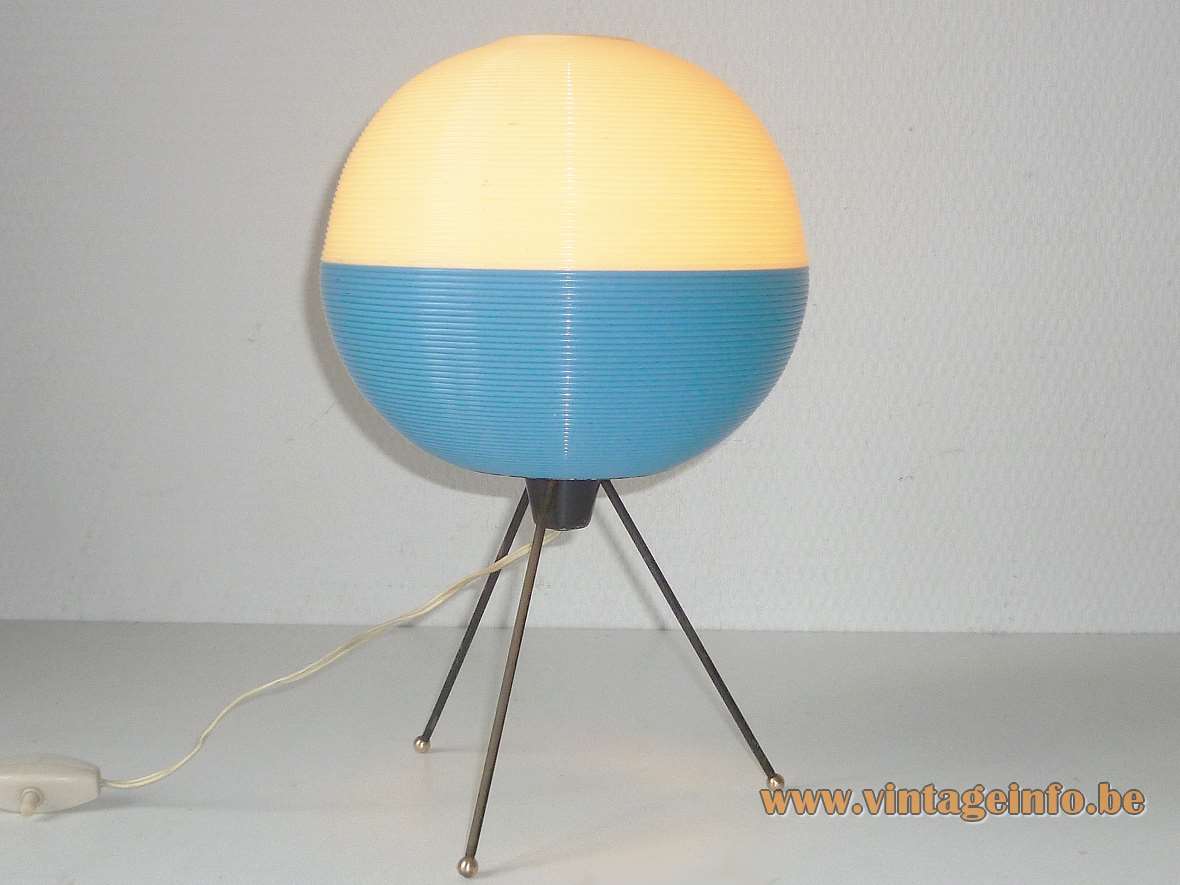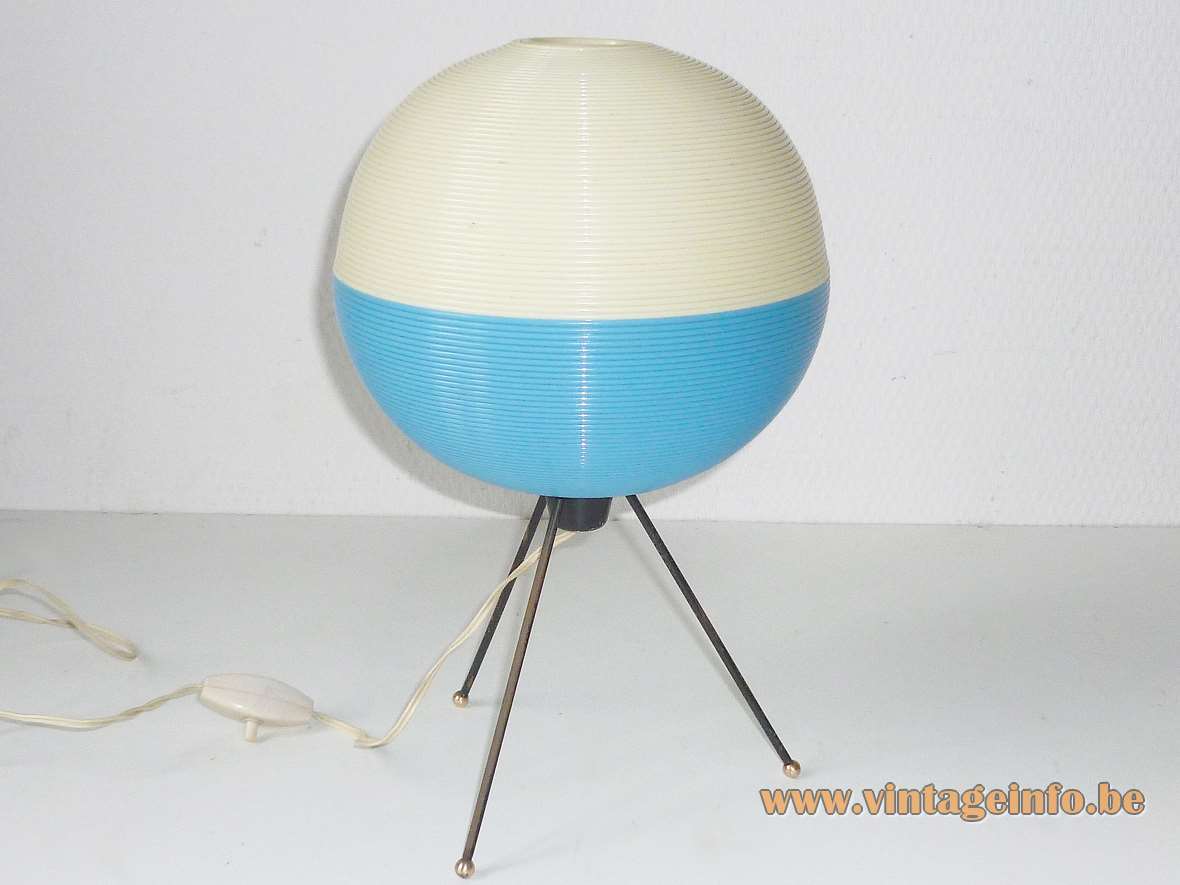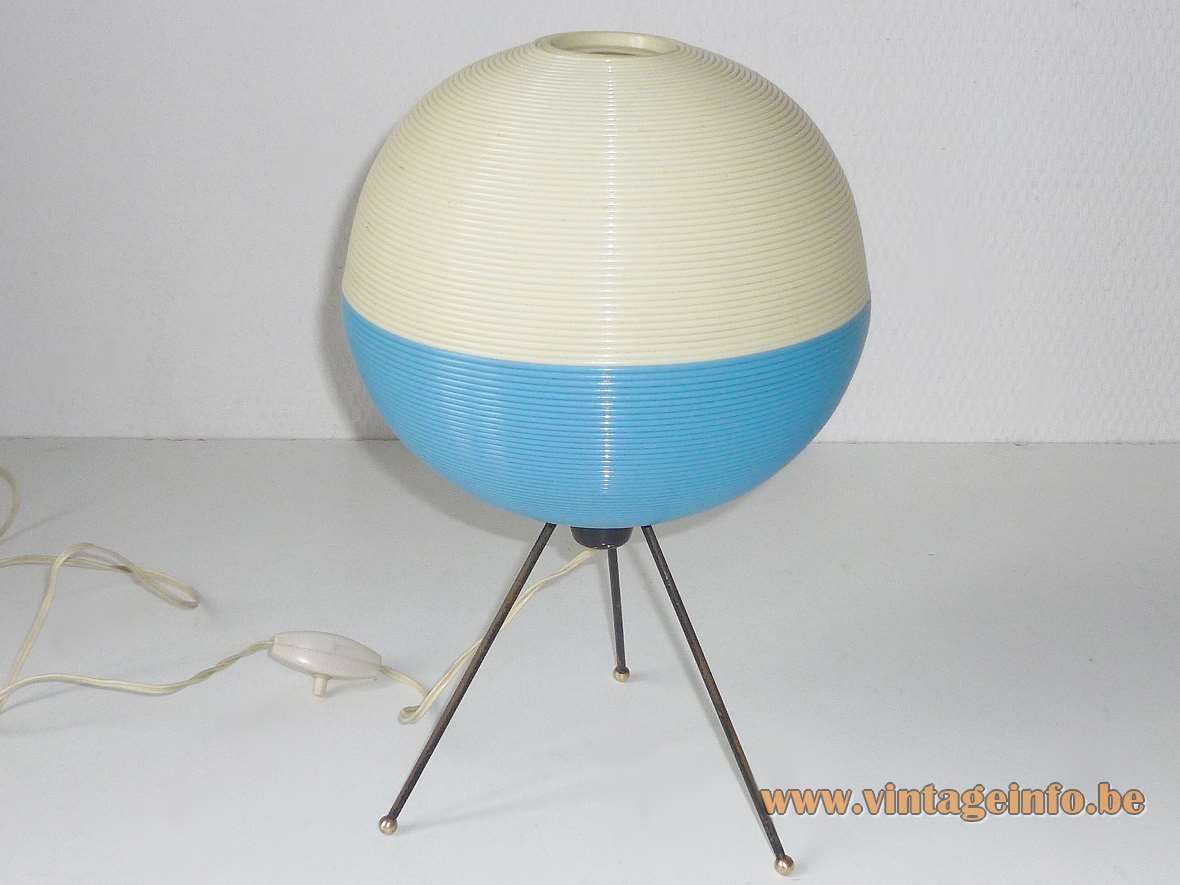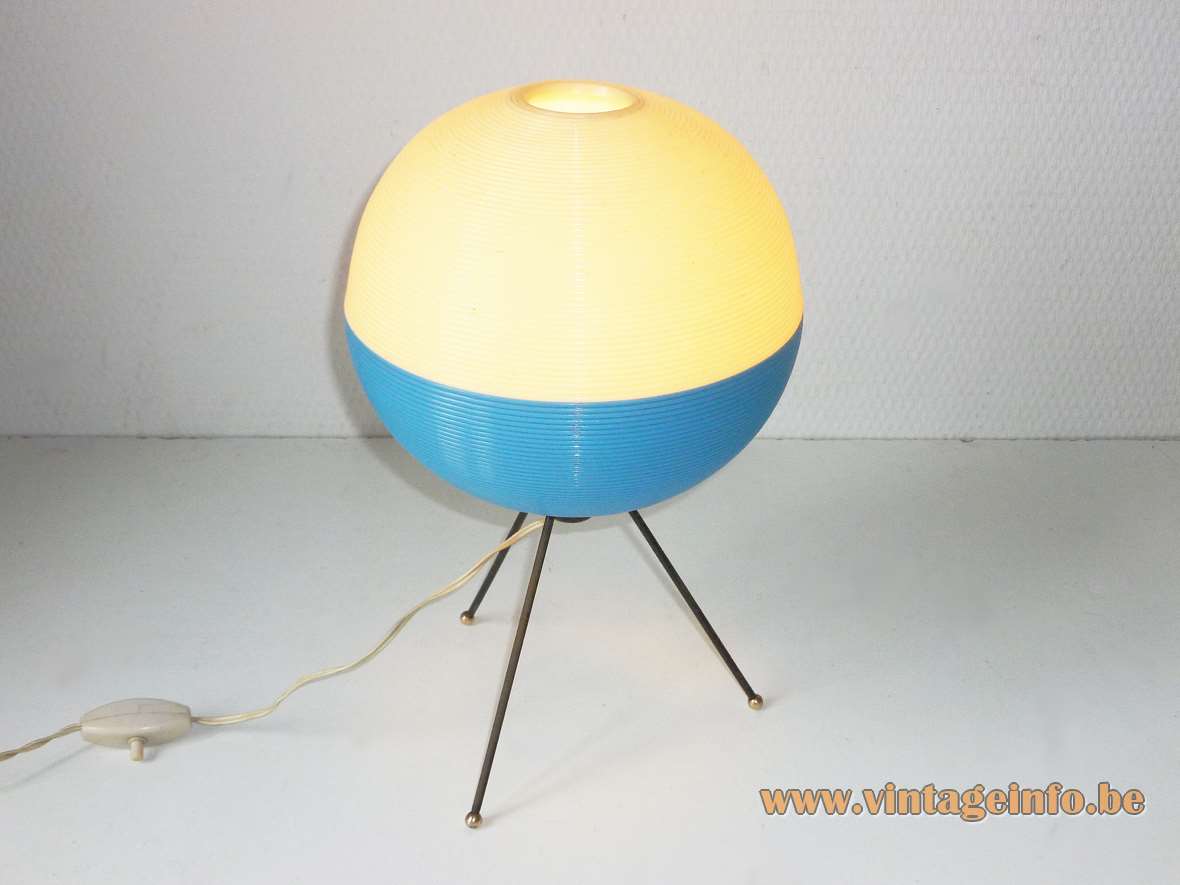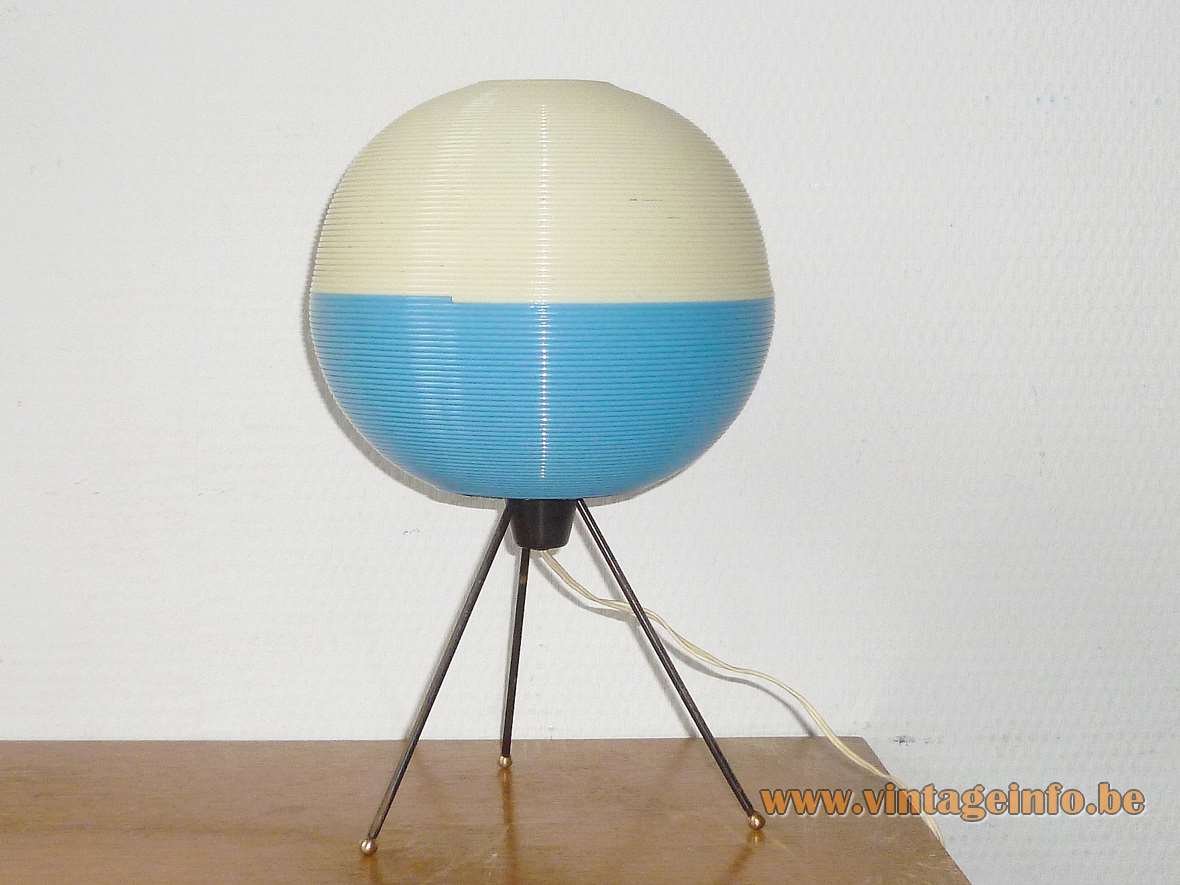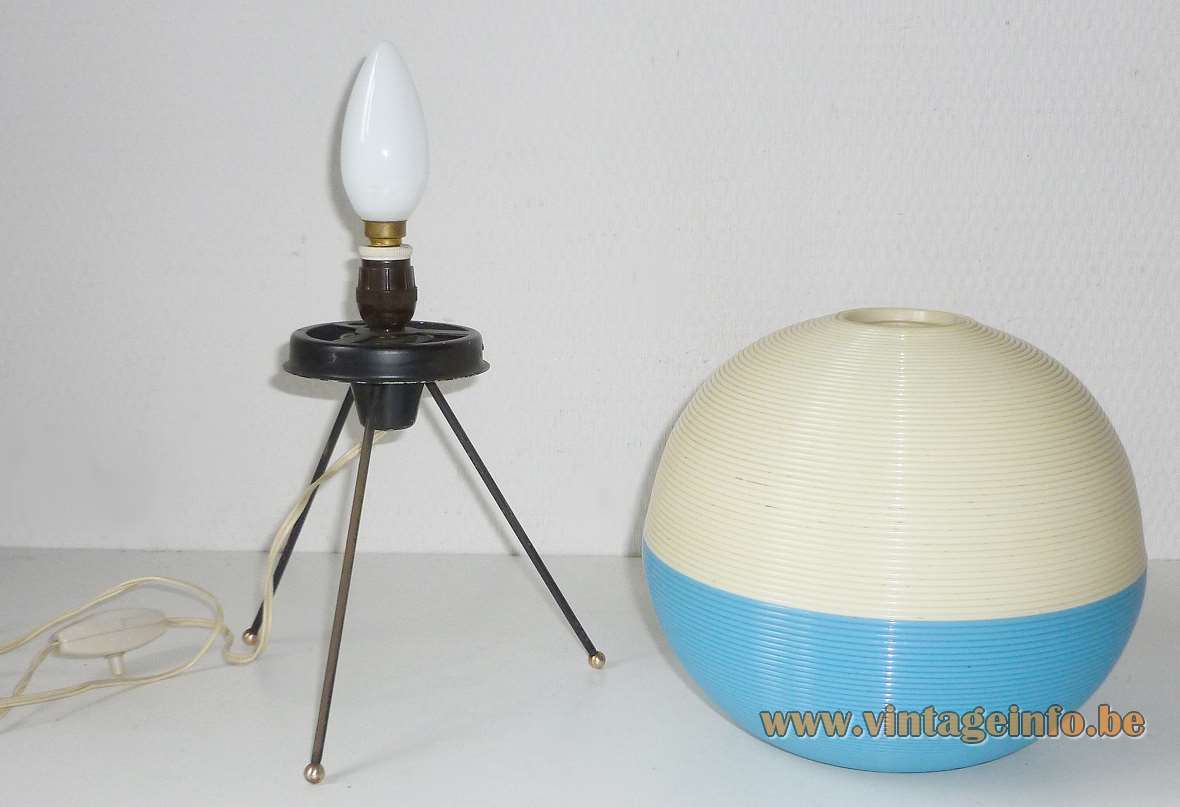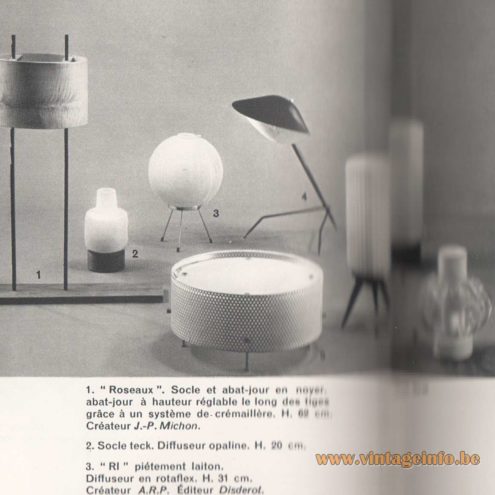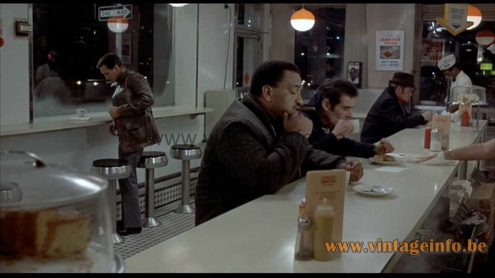Rotaflex tripod table lamp R1 – L’Art Menager 1963 book
Links (external links open in a new window)
Facebook – John & Sylvia Reid Collection
Twitter: Galerie Pascal Cuisinier A.R.P. exposition in Paris, France in 2017
Galerie Pascal Cuisinier website
Interview from 1966 with Bernard Stern about Rotaflex on the vads-website
Joseph-André Motte – Wikipedia
Rotaflex Tripod Globe Table Lamp
Materials: Black painted brass tripod with ornamental brass ball screws. Black painted iron parts. Blue and white Rotaflex plastic globe. Bakelite E14 socket.
Total Height: 31 cm / 12.20”
Width: ∅ 18,5 cm / 7.28”
Tripod Base: 15 x 15 cm / 5.90 x 5.90”
Electricity: 1 bulb E14, 1 x 40 watt maximum, 110/220 volt.
Any type of light bulb can be used, not a specific one preferred. For this setup a white light bulb was used.
Period: 1950s – Mid-Century Modern.
Designer: A.R.P. – Atelier de Recherche Plastique.
Manufacturer: Rotaflex, Rue d’ Arcueil 2, Paris, France.
Other versions: The Rotaflex tripod globe table lamp was made in several colours and also complete white. The name or number of this tripod table lamp is R1. Probably Rotaflex 1, the first lamp of the company. Variations in the base exists.
The Rotaflex plastic type was invented by Rotaflex together with the French company A.R.P. – L’ Atelier de Recherche Plastique (Plastic Research Workshop).
Atelier de Recherche Plastique
The company Atelier de Recherche Plastique was founded in 1954 by Pierre Guariche (1926 – 1995), Joseph-André Motte (1925 – 2013) and Michel Mortier (1925 – 2015). The three young designers wanted to shake the codes of classicism by drawing new forms to create more accessible furniture and lights. All three met while working in the agency of designer Marcel Gascoin.
In 1954, they take part in the Salon des Arts Ménagers (Household Arts Fair) and they receive numerous prizes. Their furniture and lamps were produced by companies such as Airborne, Disderot (Atelier Pierre Disderot), Meubles TV, Huchers-Minvielle, Luminalite, Steiner and Rotaflex.
The ARP, Atelier de Recherche Plastique did not last long. 3 years later in 1957, the company will end.
Rotaflex
Rotaflex was founded in 1953 and led by Bernard Stern who brought the company in a few years to one of Britain’s leading lighting makers.
John & Sylvia Reid were two of the most well known consultant designers for the lighting manufacturers Rotaflex. They are famous for their Metallux, Interplay, Honeycombs, Fernland Cylinders, Sphere lamp designs and many more. They also designed many of this type of plastic lamps.
John & Sylvia Reid also designed furniture for Stag between 1952 and 1962. Their S-range furniture is back in production, you can find it on their website.
Rotaflex received several design awards, among others, iF Design awards for cellulose acetate pendant lamps in 1957. The Rotaflex company no longer exists.
Disderot
Disderot produced this lamp in France, as you can see below. Photo taken from the L’Art Menager book from 1963 (page 344). A book published by Flammarion Paris, France. But it is slightly different. The Disderot lamp has plastic caps on the legs. These one are made in brass and much more elegant. Also, the Disderot lamp has a B22 socket (in France). In all probability it is a first edition and produced by Rotaflex.
In Germany it was Sompex Licht und Form, Rolf O. Burghard KG Düsseldorf, who produced and sold them. In Belgium and some other countries in Europe they were sold by Massive. Disderot produced and sold them in France. Philips from The Netherlands had some lamps in their collection.
In Sweden these lamps were named Rotoflex and they were produced by Bergboms. Designers: Alf Svensson, Bertil Roos, Sigvard Bernadotte. In Finland they were sold by Oy Plastex AB and Stockman ORNO. You can find several lamps in the catalogue here on Vintageinfo.
In the USA they were produced and sold by Heifetz, Lightolier and Verplex.
Cellulose acetate
Cellulose acetate is an early acrylic, sold under the trade names Rhodoid in France and Great Britain, Tenite in the USA and Cellon in Germany. It was first prepared in 1865. Cellulose acetate is used as a film base in photography, for eyeglasses, cigarette filters and playing cards.
White and orange Rotaflex globe pendant lamps were used as a prop in the 1973 American mystery action film The Seven-Ups. Starring Roy Scheider, Tony Lo Bianco and Larry Haines.
Many thanks to Samuel for the beautiful pictures and the enthusiasm.
